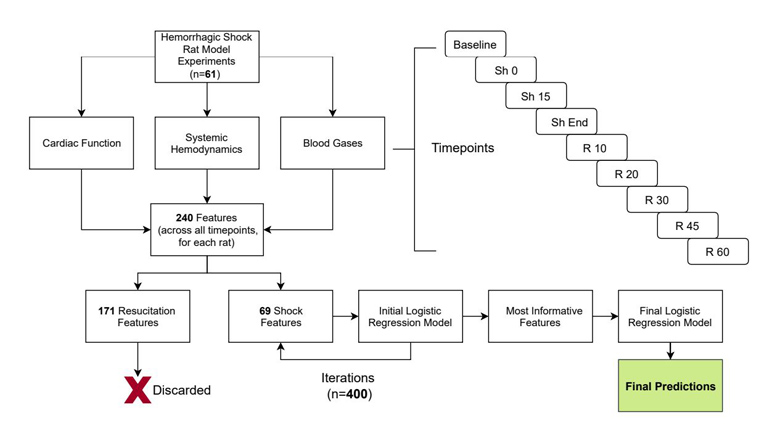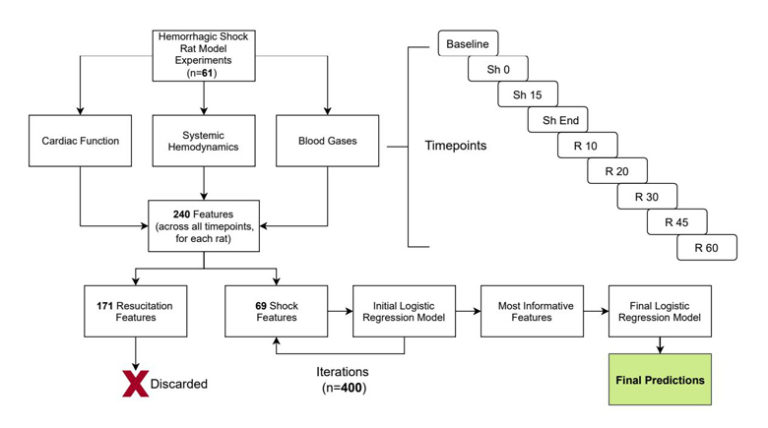
Abstract
Objective: This study implements logistic regression models (LRMs) and feature selection for creating a predictive model for recovery form hemorrhagic shock (HS) with resuscitation using blood in multiple experimental rat animal protocols Methods: A total of 61 animals were studied across multiple HS experiments which encompassed two different HS protocols and two resuscitation protocols using blood stored for short periods using five different techniques. Twenty-seven (27) different systemic hemodynamics, cardiac function, and blood gas parameters were measured in each experiment, of which feature selection deemed only 25% of the them as relevant. The reduced feature set was used to train a final logistic regression model Results: A final test set accuracy of 84%, compared to 74% for a baseline classifier using only MAP and HR measurements. Receiver operating characteristics (ROC) curve analysis and Cohens kappa statistics were also used as measures of performance, with the final reduced model outperforming the model including all parameters Conclusion: Our results suggest that LRMs trained with a combination of systemic hemodynamics, cardiac function, and blood gas parameters measured at multiple timepoints during HS, can successfully classify HS recovery groups Clinical Impact: Our results show the predictive ability of traditional and novel hemodynamic and cardiac function features and their combinations, many of which had not previously been taken into consideration, for monitoring HS. Furthermore, we have devised an effective methodology for feature selection and shown ways in which the performance of such predictive models should be assessed in future studies Index Terms -Hemorrhagic Shock, Logistic Regression, Critical Care, Cardiovascular Function.

